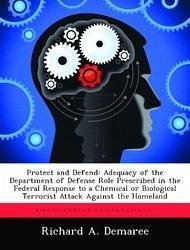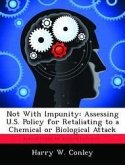President Bush's Executive Order 13228 establishes within the Executive Office of the President an Office of Homeland Security (OHS). The order directs the OHS to develop, coordinate, and implement a national strategy to secure the United States from terrorist attacks. One type of terrorist attack the United States may find itself responding to and recovering from is one involving chemical or biological Weapons of Mass Effects. This study finds that the "not if, but when" school of thought is no longer the view of the alarmist, but the realist. The Federal Emergency Management Agency's Federal Response Plan (FRP), which coordinates the response of twenty-seven federal agencies and departments, inadequately addresses the role of the Department of Defense (DOD). This study finds there are roles necessitated by a chemical or biological terrorist attack against the homeland that are not prescribed to DOD in the FRP or in the supporting response plans of the Environmental Protection Agency, Department of Health and Human Services, or Federal Bureau of Investigation. Furthermore, this study finds some of those roles are feasible, suitable, and acceptable for the military. Those roles include chemical and biological protection, disease surveillance, epidemiological investigation, laboratory support, veterinary services, mental health services, civil disturbance support, disease containment, and coordination. This study recommends DOD resolve its dual use dilemma so that it is feasible for military assets to support the Lead Federal Agency while remaining ready to fight and win the nations wars.








